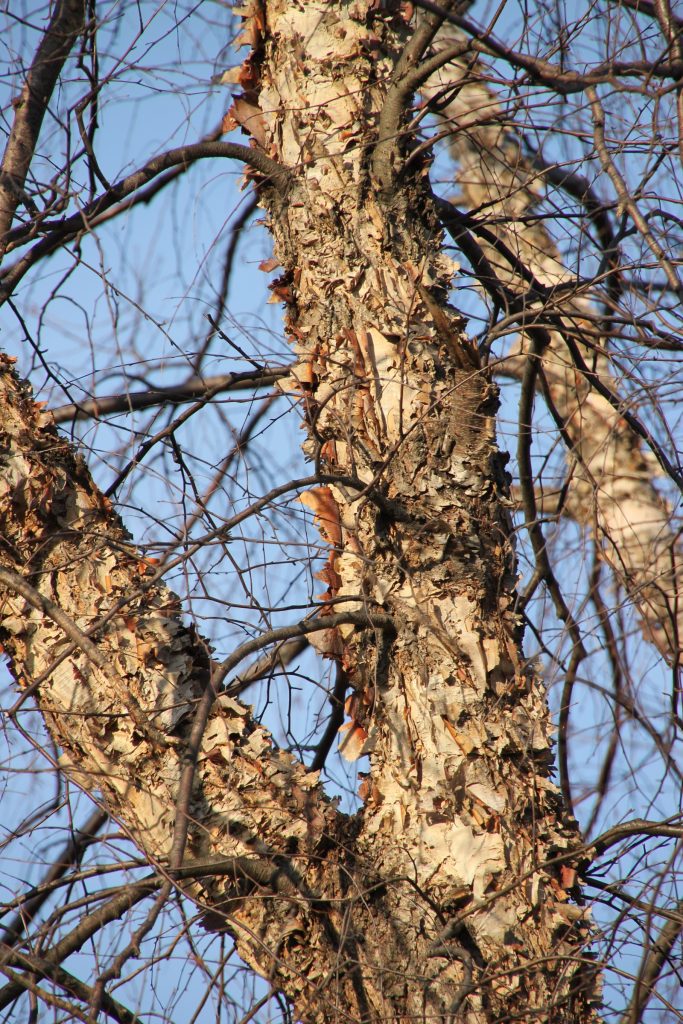
This article was originally published for the Northwoods Yard and Garden column by Extension Iron County.
Most people will agree that shade trees provide their maximum benefits when covered with foliage during the growing season. Now that they have dropped their leaves until next spring, trees can still be aesthetically pleasing, and this is also valuable time to assess the overall condition of your shade trees.
Many trees have features such as interesting bark, form, or branch structure that contribute to the landscape all winter. Native white birches lead the list as they are perhaps most prominent around Wisconsin during the dormant season. There are many others. Trees such as river birch, alder, shagbark hickory or shrubs such as red twig or yellow twig dogwood and ninebark are just a few examples of species with interesting bark features that stand out.
Notice how different trees vary in branch structure and overall form when void of leaves. Winter is a good time to visit an arboretum, park, or botanic garden to view different trees in their dormant state and get ideas for future plantings. Spend time researching potential trees to add to your landscape next year. While aesthetic features like bark or branch structure are important, thoroughly research cultural factors. Critical information includes hardiness, mature size, potential insect or disease concerns, and maintenance needs. Make sure the tree is a good fit for your specific landscape site situation.

The dormant season can also be a good time to take a closer look and assess the overall tree condition. Pruning needs are much easier to see when leaves are not present. Start by looking for broken branches, hanging limbs, or dead limbs missing bark or showing signs of decay. These types of branches should be removed promptly.
Also look for other problems to be corrected by pruning. Examples include crossing branches or branches growing into each other. Decide which contributes most to the overall appearance of the tree and remove the other before next season. Oftentimes trees may need some thinning out, so look to see how congested the center region is. These types of pruning corrections are best done on most trees in late winter or very early spring, rather than now.
Finally, look closely at the trunk for signs of wood rot. Visible signs include mushroom or other fungal growth or hollow cavities. Suspect trees should be checked out by a certified arborist to ensure they are not at risk of falling over. Arborists can also help with pruning needs of trees, in particular large shade trees.

About the Author
Bruce Spangenberg is a Horticulture Outreach Specialist with UW-Madison Division of Extension. Get answers to your lawn, landscape and garden questions anytime at “Ask Your Gardening Question.”




